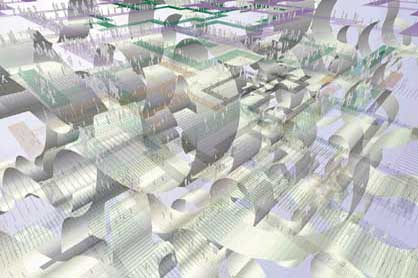|
|
||||||
| image | activities | contacts | links | italiano | ||||||
|
5th
International Festival for Architecture in Video |
||||||
|
introduction program - dates - authors - works - exhibitions partners credits previous editions mailto |
 Shuhei Endo (Shuhei Endo Architect Institute) Springtecture Japan 2000, 14’10” The architect today is groping for plausible para-modern architecture that can open up new possibilities by overcoming the self-imposed limitations of modernism in architecture that resulted from pursuing uniformity to excessive degrees, while taking advantage of its possibilities and effectiveness to the fullest extent. In modernism, architects broke down the whole of architecture into such elements as post, beam, roof, and wall, and reassembled these elements again. Limitations inherent to this kind of 'composition' may be regarded as a major reason why modernism in architecture never gained real richness in its character. Therefore, this architect has experimented with non-compositional methods in two types of architecture. The first type is based upon questioning a new a fundamental premise of architecture, namely complete separation of interior and exterior. This type of architecture consisting of open spaces has been named, to use a neologism, 'Halftecture'. In the other, architectural spaces are created with a single element, that is, continuous strips of plate encompassing both roof and wall, not with the compositional elements obtained by breaking down the whole of architecture into its elements. This has been called, in a similar vein, 'Rooftecture'. These buildings are concrete examples of an attempt at realizing possibilities of Paramodern architecture. Shuhei Endo, born 1960, obtained his Master degree from the Kyoto University of Art in 1986. In 1988 he created the Shuhei Endo Architect Institute; in that year he also obtained the Japan Federation of Architects & Building Engineers Association Award, the Marble Architectural Award and the East Asia Grand Prix, Italy. Since 1988 he also taught at the Kinki University, Kobe, at the Design School and at the Fukui Institute of Technology. Following the ‘Springtecture’ principle, he designed “Springtecture H”, public toilets in Hyogo, 1998 and “Springtecture A/Aomori Project” for the Art Museum in Aomori, Japan, 2000. Following the ‘Rooftecture’ principle, he designed several projects: “Rooftecture T” in Fukui, 1997; “Rooftecture N”, warehouses and offices, in Hyogo, and “Rooftecture O”, a Shintoistic place of worship in Fukui, 1998; “Rooftecture M” in Tokyo, “Rooftecture Y” and “Rooftecture H” in Hyogo, 1999; “Rooftecture W/Wipo project”, the extension of the seat of the World Intellectual Property Organization in Geneva, 2000. He also designed the “3d Factory” in Shiga, 1990, two bicycle shelters, “Cyclestation M” in Shiga and “Transtation O” in Fukui, in 1994 and 1997; “Maison U” in Osaka and “Maison O” in Kyoto in 1988 and 1995 respectively; “Healtecture K” (residential and office buildings in Osaka) and “Skintecture I” (a fishing association in Hyogo) in 1996; his latest work is “S Complex” in Shiga. He recently took part in the following exhibitions: “GA House Project”, Tokyo, 1997 and 1999, and “The Possibility of Architecture”, Osaka, 1997 and 1998. Nel 1999 he published “Shuhei Endo” (GG Portfolio, Gustavo Gili publishing house, Barcelona). |
VIDEO | ||||